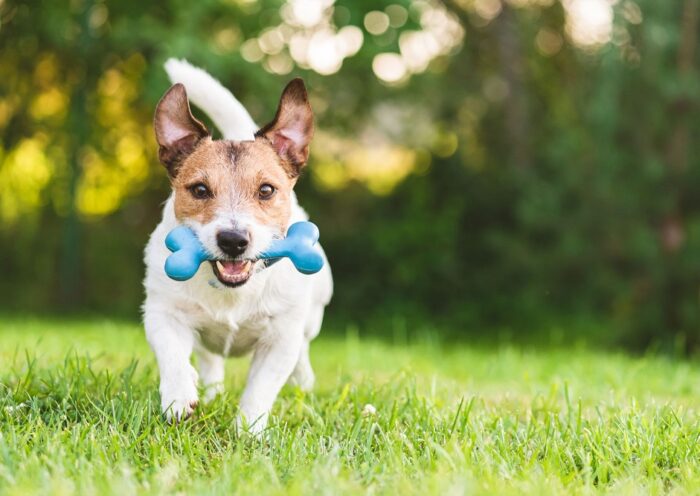
7 Essentials to EVERY Dog Training Method
Training your dog can be a daunting task, one that many dog owners are not sure they have the time or energy to commit. To help ease this process we have compiled seven dog training methods with essential ingredients for each. These are the basics that you need in order to train your dog properly!
1. Motivation

When training your dog, it is important to pay close attention to their behavior across all of the environments they are in. Notice what motivates them and how you can use that knowledge when selecting the best way for your pup’s personality type.
You might not notice it at first, but your pup has their own quirks and preferences. They may enjoy certain spots
more than others or be extra skittish around new people. Pay attention to how they act in unfamiliar situations so that you can customize the experience for them accordingly!
Ask yourself: Do my dog’s vibes seem off? What sort of things does my pup like best? Where are particularly exciting places they like to go?
Once you know the answer to some of these questions, take advantage and maybe even try new things together–just keep in mind different dogs have varying degrees of energy levels up until old age sets in.
2. Patience
It takes time to teach a dog new things. From patience comes progress!
Some people believe that it is possible for you and your pup to “learn everything overnight.” But what they don’t know is that patience pays off! This is especially true if your dog was rescued from a shelter and possibly had a traumatizing past.
Stay consistent with one another in order for both of your efforts not go wasted. As long as there’s hope, the effort in your patience will be well worth it!
3. Consistency

One of the most important things to remember when training your dog is that consistency matters. Consistency in setting rules, being strict about them and following through with praise or reprimand every time can go a long way toward forming good habits for both you and your pup. But don’t forget — just as humans need reminders, so do dogs!
In order to create consistency in your dog’s training, there are two things you need to consider: rules and commands. Rules refer strictly to what is and isn’t allowed for the pup; this includes enforcing reprimands or praise on a consistent basis each time they’re doled out. For example, if as a household the rule is to have your dog “sit” before putting their leash on so they do not jump up with excitement, that command with the same follow through needs to happen every time.
Commands refer back into maintaining their obedience through simple single words meant to be obeyed, such as “sit,” “stay,” or “down.” Keeping commands consistent within the household will make it easier on everyone involved because they’ll know what’s expected without having to be told over again each day.
Rewards also need to be a consistent motivating factor in training. A clear expectation, followed by the same response (response/reward) each time is key to ensuring success for your pup. Remember that it’s important not only what behaviors you reward but also how you respond to those which are undesired! It needs to be CONSISTENT.
4. Body Language
Dogs first learn by watching body language, which means that you can teach them new skills through modeling what you need/want from them. One great technique is pairing verbal commands with a hand signal – this taps into their visual/auditory processing abilities!
Here are the most common forms of body language in dogs:
- Tail wagging – This means that he or she is happy or
- Don’t be fooled! Some tail wagging can be considered nervous After spending time with your pooch, you will learn the difference.
- Raised hackles – To show aggression but also fearfulness; usually more hair on hindquarters than back
- Weight distributed postures- A signal of interest. If your dog is leaning more forward, it may because they spell something of interest or are spurious about something and therefore, leaning into it.
5. Tone and Volume
When training your dog, tone is far more important than words. While dogs are able to learn an association with words (commands), the tone of your voice goes beyond just being sweet and loving; it also provides clarity in how you’re feeling at any given
moment.
Dogs understand the difference between a low or high pitch sound which means that they can differentiate when praise or punishment has been delivered by observing their owner’s reactions accordingly.
Pro Tip! Pairing tone with body language is a great way to ensure your dog knows what you want from them.
6. Shaping
Dogs are highly social and intelligent animals that can be trained to do many things. In order for your dog to learn how to sit, stay, lie down or shake on command they must first understand the basic commands of “sit,” “stay” and so forth. To teach these basic commands and beyond, shaping is the way to go!
Shaping is a process where we teach desired behaviors gradually by rewarding them in small increments until the desired behavior is perfected!
7. Commands

In order to communicate with your pet, you need to use short sentences that stick. Dogs do not understand long commands, so they might get bored or confused. If given a complicated sentence such as “Hey Max I want you to lie down and wait until I say to get up,” they are sure to look at you like you are speaking another
language…That’s because you are! Instead of this confusing command try saying “SIT” or “WAIT.” This will keep both your dog’s attention on
you because it is simple enough for them, but also respects how intelligence works in your canine friend.
In conclusion, just know that it is totally normal to feel overwhelmed. Owning a dog is a big commitment, but deciding to take the steps to ensure your dog leads a happy life is an even greater one. It can be daunting to learn new skills, especially when it comes to dog training.
Remember that while hiring a professional dog trainer will certainly enhance your training practice, you know your pup better than anyone else, so trust the way your intuition guides you on this journey. As long as you stick with these essentials, your
foundation will be strong and therefore, you and your dog will be on the path to success.
After reading this article, I highly recommend you follow it up by reading what I wrote about “The 6 Most Common Dog Training Methods and Which is Best for Your Dog.” In this article you will learn about the six most used training methods in order to determine which seems like the best fit for you and your dog.





